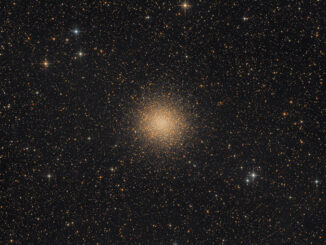
Ophiuchus

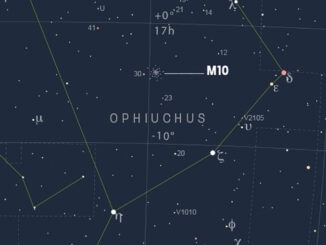

Further Jupiter events for UK observers in July 2019
July opens with Jupiter three weeks after opposition, but the largest planet is still putting on a fine show as an unmistakable magnitude -2.6 object low in the south before midnight in the constellation of Ophiuchus (the Serpent Bearer). With ongoing developments in the Jupiter’s Great Red Spot and plenty of phenomena occurring with the planet’s large Galilean moons, here’s our Jovian observing guide for July 2019.
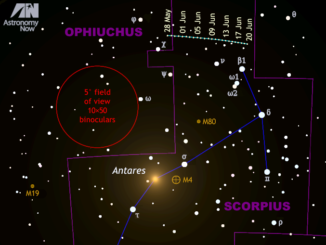
See dwarf planet Ceres at its best for 2019
Have you ever seen a dwarf planet? Of the five within our solar system recognised by the International Astronomical Union – Ceres, Pluto, Haumea, Makemake and Eris – only Ceres can be considered bright and easy to locate. It reaches opposition in the constellation of Scorpius on 29 May at magnitude +7, an easy binocular object if you follow our guide.

See the Moon and Jupiter get close in the small hours of 21 May
Observers in the UK with clear skies around 1am BST on Tuesday, 21 May can see Jupiter, the solar system’s largest planet, just 4 degrees from the waning gibbous Moon low in the south-southeast. At this time both the Moon and Jupiter fit within the same field of view of binoculars magnifying less than 10×, while telescope users can also view Jupiter’s Great Red Spot.
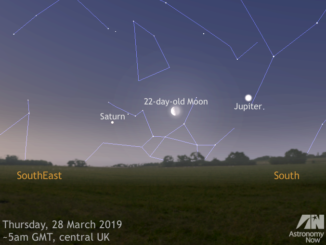
See the waning Moon meet Jupiter and Saturn at dawn, 27–29 March
For lunar and planetary enthusiasts, the only naked-eye planet of the evening sky is distant and tiny Mars in the constellation of Taurus. But if you’re prepared to be an early riser, the dawn sky is where you’ll find two of the solar system’s heavyweights, Jupiter and Saturn, getting up close with the Moon on 27 and 29 March, respectively.
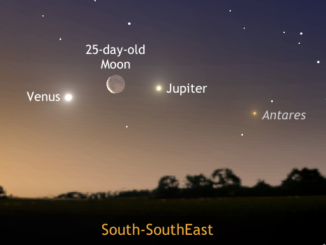
See a dawn triple conjunction and a lunar occultation on 31 January
Skywatchers in the UK and Western Europe should look low to the south-southeast an hour before sunrise on 31 January to see a beautiful naked-eye conjunction of Venus, the old crescent Moon and Jupiter, all within a span of 8½ degrees. But if you have a telescope and live in just the right place, you can also see the Moon hide a double star.

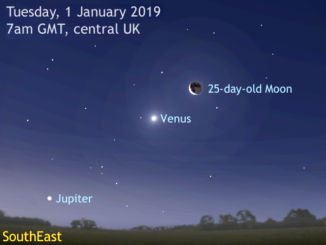
See the old Moon close to Venus then Jupiter in the dawn sky
Early risers in the UK with an unobstructed horizon from southeast through south can see the old crescent Moon close to dazzling Venus in Libra then Jupiter in Ophiuchus over three consecutive mornings starting New Year’s Day around 7am GMT. The brightest and largest planets lie little more than the span of an outstretched hand at arm’s length apart at this time.
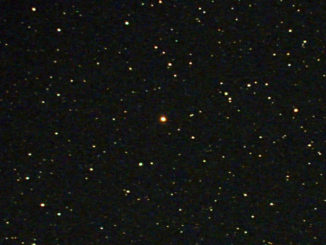
Find Barnard’s Star, the Sun’s closest stellar neighbour visible from the UK
Barnard’s Star is a familiar name in both the history of astronomy and popular culture, but did you realise that it’s the closest stellar body to the Sun that you can see from the British Isles and similar latitudes? We tell you some fascinating facts about this famous runaway star and show you how to locate it.
